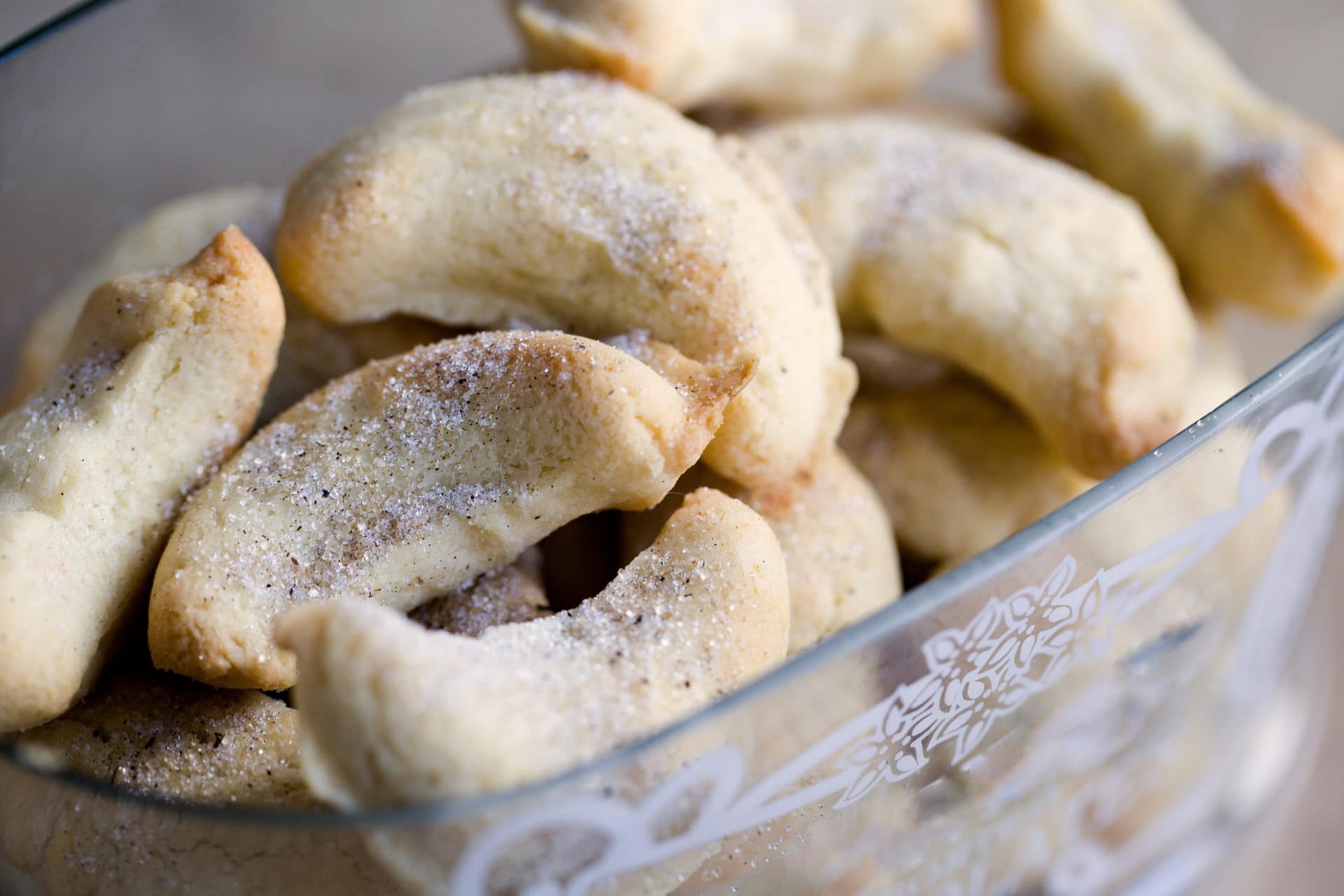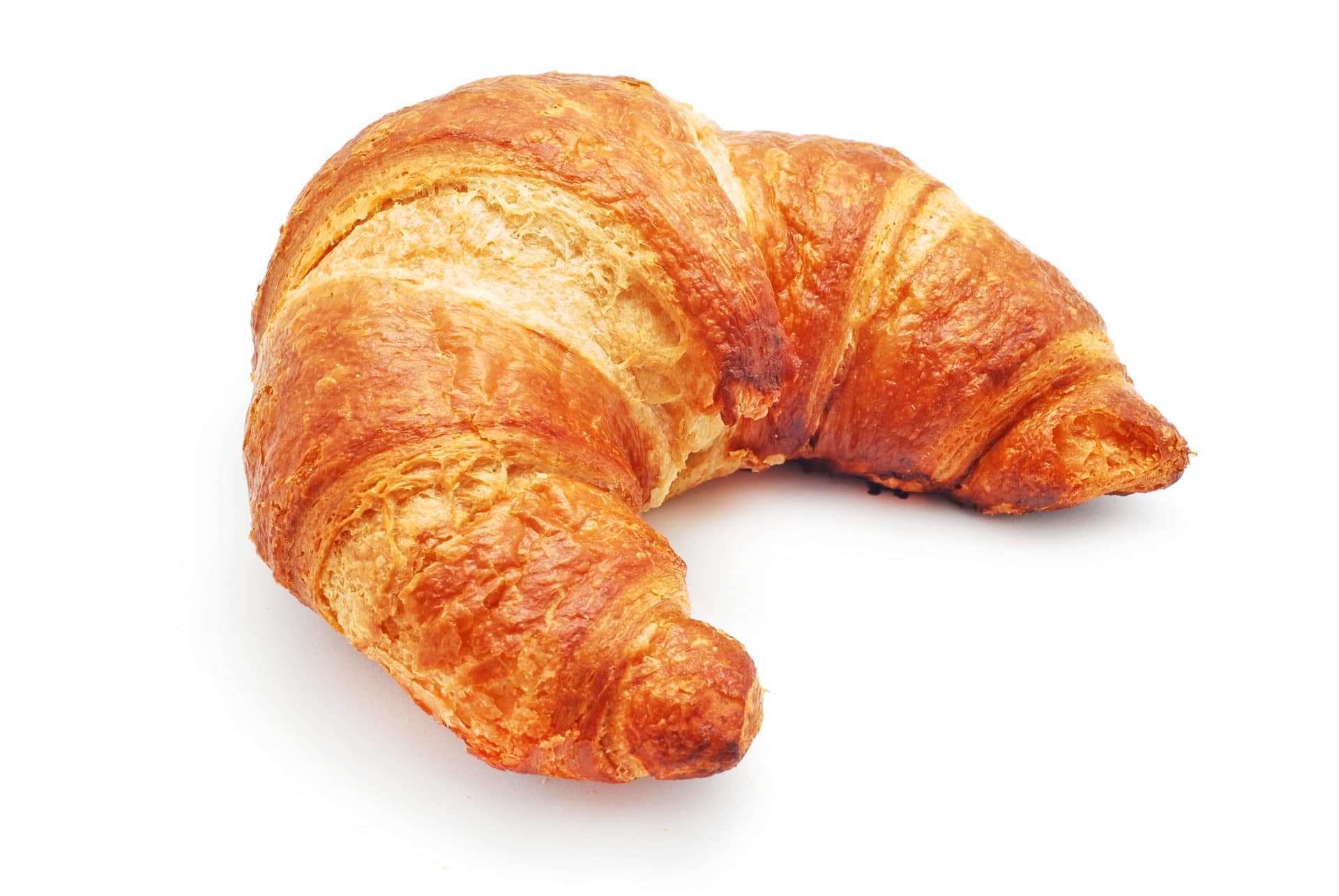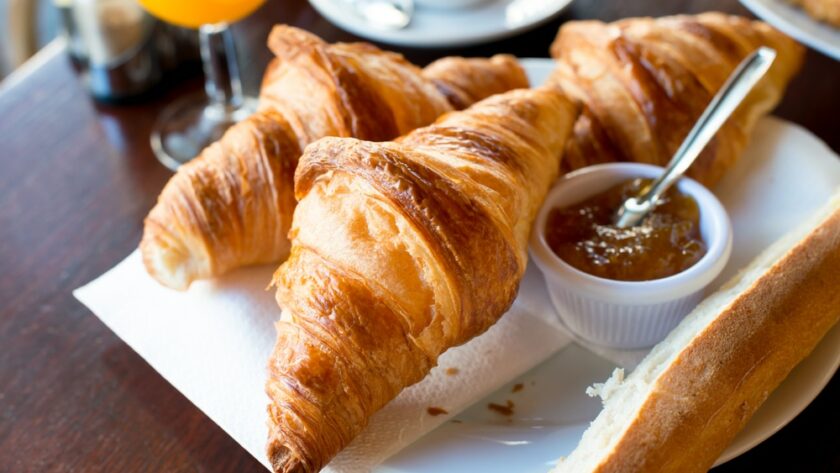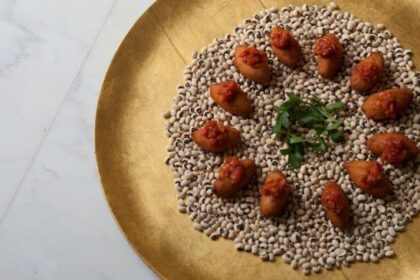Paris is famed for its pastry, but while millefeuille is marvelous and fans of the éclair abound, the heart and soul of French pastry is undoubtedly the croissant. A breakfast favorite and the source of inspiration for concoctions from the croissant-wich to the cronut, the croissant is nearly a cliché today. After all, what could be simpler and yet more delicious than layers of flaky, buttery pastry and a crispy outside layer?
And yet for years, food historians have disputed the origins of the croissant: is it truly a French pastry? Or is it Viennese, as the French term viennoiserie – encompassing croissants but also pains au chocolat and chaussons aux pommes – would have us believe?

A French Pastry…Or Is It?
The earliest story of the croissant dates all the way back to 1683 Vienna, Austria. The legend takes place during the Ottoman Turk siege of the city; a baker apparently heard the Turks tunneling under the walls of the city as he lit his ovens to bake the morning bread. He quickly sounded an alarm, and the military collapsed the tunnel, saving the city. To celebrate, the baker baked a crescent-shaped bread, in the shape of the crescent moon of the Turkish flag.
This story is one of many like it. A similar one sets nearly the same course of events in Budapest, Hungary. Food historians dispute both versions, but if the first of the two stories seems the most likely, it’s due to yet another legend as to how the croissant finally became French. The source is the same as that of the color puce – Marie Antoinette.
The French queen during the Revolution was not French-born; she arrived in France at age 15 from Austria. Legend has it that she so missed an Austrian specialty called the kipfel – German for crescent – that she requested royal bakers attempt a version.
Of course, the far less romantic version of this tale – which also happens to be the more likely version – is the story of August Zang, an Austrian artillery officer who founded a Viennese Bakery in Paris in 1839, after the French Revolution. Most food historians agree that he is the most likely one to have introduced the kipfel to France, a pastry that later inspired French bakers to create a crescent of their own.

Which version of the story is true? It’s hard to say. The first mention of the croissant in French is in Anselme Payen’s 1853 Des Substances alimentaires – published nearly a century after Marie-Antoinette’s reign, which adds further doubt to the idea that the trendsetter queen introduced the pastry to Parisian palates. The first printed recipe does not appear until Joseph Favre’s Dictionnaire universel de cuisine, published 52 years after this first mention, a recipe containing powdered almonds and sugar that more closely resembles a Middle Eastern pastry than the laminated dough creation we know and love today.
One thing is certain: one year after the publication of the Dictionnaire universel de cuisine, Auguste Colombie’s Nouvelle encyclopédie culinaire published a “true” croissant recipe, with laminated dough as opposed to a more brioche-like dough that had been used previously. The croissant, as we know it, was born.

A Staple Of French Culture
Wherever the croissant originally came from, it is firmly ensconced in French bakery tradition today. The most popular is undoubtedly the croissant au beurre, or butter croissant, not to be confused with the croissant ordinaire, which is made with margarine. In fact, the more beautiful, typically crescent-shaped croissants you see in your bakery window are often the ordinaires, a butter croissant is more straight than curved and is worth the extra centimes!
While a savory ham-and-cheese croissant sandwich is nearly unheard of in France, there are a few other varieties. A pain au chocolat, often called a chocolate croissant in English, is in fact the same sort of laminated dough used to make a croissant, but it is not usually rolled into a crescent shape, thus the absence of the word “croissant” in its French name. An almond croissant is filled with a frangipane filling and usually topped with slivered almonds and powdered sugar. And while the trendy cronut hasn’t hit France quite yet, only time will tell how international influence will continue to develop this beloved viennoiserie.
A Taste Of Paris
If you happen to be in Paris and want a taste of this specialty, you’ll likely find them at any boulangerie. But if you’d like an exceptional morsel, try these addresses:
- Bread and Roses, 62 rue Madame (6th arrondissement) – Exactly what a croissant should taste like! Buttery, just a bit sweet, and with the perfect amount of chew.
- Des Gâteaux et du Pain, 63 boulevard Pasteur (15th arrondissement) – Fat and slightly caramelized on the outside with an airy, puffy interior.
- La Pâtisserie Cyril Lignac, 24, rue Paul Bert (11th arrondissement) – These ones are pretty much just butter held together with a touch of flour. Exquisite.
Recommended:
Coffee Culture: Top Five Cafes In Paris, France [Blog Inspiration]
Making Dough: Recipes and Ratios for Perfect Pastries [Global Table]
The Wander Year: One Couple’s Journey Around the World [Great Reads]
Do you have a favorite croissant shop in France or delicious croissant recipe? Please share in the comments below.
Emily Monaco
Latest posts by Emily Monaco (see all)
- Top 10 Prague Pastries To Try On Your Next Czech Republic Trip - Dec 20, 2023
- Unusual Budapest: Childhood Memories & Sweet Treasures At The Marzipan Museum - Sep 8, 2016
- How The Tomato Transformed The European Diet - Jan 9, 2016
- Is Himitsu The Secret To Atlanta’s Burgeoning Cocktail Scene? - Dec 28, 2015
- The French Influence On Vietnamese Cuisine - Dec 16, 2015





Great information on this famous French food. It’s amazing how food travels from one place to another and become a local food that is identified to a whole different country. Thanks for sharing your research, as well as for great places to find the best-tasting croissant.
@All: Thank you for the kind words and thank you for reading!
Never really doubted the origins of this famous and so French pastry. Turns out it’s not really French! Thank you for this great and informative article.
However, we can’t argue about how the French bakers are taking good care of this reapproriated culture.
I would have never guessed that France’s most French pastry was originated abroad… yet alone in Austria! Many thanks for thus very informative article, as fellow European, it changed my prospective on how I look at culinary dishes from around Europe.
It’s good to read this article! I can realize how tasty French food is and even I just read the post!
Thanks for your share. I appreciate you’re devoted on this field.
(Please forgive my English writing, I’m just a noob.)
Thanks for your share. I appreciate you’re devoted on this field.
(Please forgive my English writing, I’m just a noob.)
Thank you for article. I know more things about French. Appreciating your dedication.
Even though I am sure I am not pronouncing it right, I still love eating it was nice to know the history behind it.
Thankyou for the article. A fascinating journey through croissant history! Whether Austrian or French in origin, its flaky deliciousness remains an iconic part of French culture. Bon appétit!
Thank you for the article. It’s fun to know more about the French culture